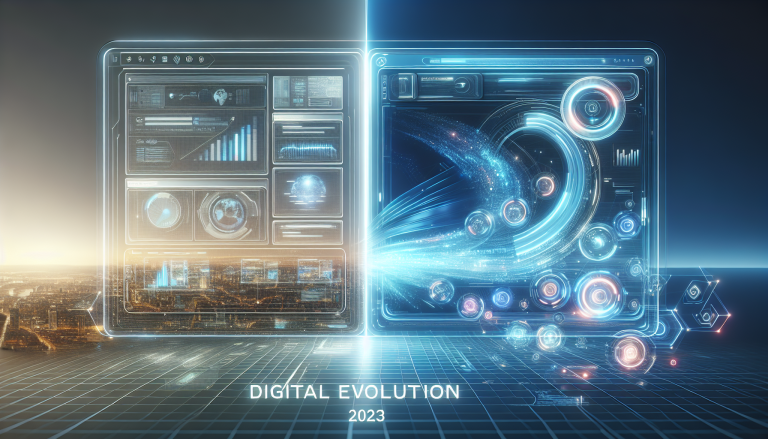Redesigning the Web: 5 Cutting-Edge Strategies to Transform Your Digital Presence in 2024
The Future of Website Design: Trends, Strategies, and Innovation
In the ever-evolving digital landscape, website design continues to be a critical element of online success. As technology advances and user expectations grow, designers and businesses must stay ahead of the curve to create compelling, user-friendly websites that captivate and convert.
The Evolution of Modern Website Design
Website design has transformed dramatically over the past decade. What was once a static, information-driven medium has now become an immersive, interactive experience that combines aesthetics, functionality, and user experience. Today’s websites are no longer just digital brochures; they are dynamic platforms that tell stories, engage users, and drive meaningful interactions.
“Design is not just what it looks like and feels like. Design is how it works.” – Steve Jobs
Key Trends Shaping Website Design in 2023
1. Minimalist and Clean Interfaces
Modern website design embraces simplicity. Minimalist layouts with ample white space, clean typography, and strategic use of color are becoming increasingly popular. This approach not only looks sophisticated but also improves readability and user navigation.
2. Responsive and Mobile-First Design
With mobile internet usage surpassing desktop, responsive design is no longer optional. Websites must seamlessly adapt to various screen sizes and devices, ensuring a consistent and enjoyable user experience across smartphones, tablets, and computers.
3. Micro-interactions and Animation

Subtle animations and micro-interactions add depth and engagement to website design. These small, interactive elements provide visual feedback, guide users, and make digital experiences more intuitive and enjoyable.
User Experience: The Heart of Modern Website Design
User experience (UX) has become the cornerstone of effective website design. It’s no longer just about looking good; it’s about creating intuitive, accessible, and enjoyable digital experiences. Key UX considerations include:
– Fast loading times
– Clear navigation
– Accessibility features
– Intuitive user interfaces
– Consistent design language
Technical Innovations Driving Website Design
Emerging technologies are pushing the boundaries of what’s possible in website design:
1. AI-Powered Personalization
Artificial intelligence allows websites to deliver personalized experiences based on user behavior, preferences, and historical data. This creates more engaging and relevant interactions.
2. Progressive Web Applications (PWAs)
PWAs combine the best of web and mobile applications, offering app-like experiences directly through web browsers. They provide offline functionality, faster loading, and improved performance.
3. Dark Mode and Color Schemes
Advanced color options, including dynamic dark mode, are becoming standard. These features improve readability, reduce eye strain, and provide users with personalization options.
SEO and Website Design: A Symbiotic Relationship
Modern website design isn’t just about aesthetics; it’s intrinsically linked to search engine optimization (SEO). Key design elements that impact SEO include:
– Mobile responsiveness
– Page loading speed
– Structured content
– Clean, semantic HTML
– Intuitive site architecture
“Good design is actually a lot harder to notice than poor design. Because good designs fit our needs so well, they feel invisible.” – Don Norman
Choosing the Right Website Design Approach
When developing a website, consider these critical factors:
1. Target Audience
Understanding your audience’s preferences, behaviors, and technological comfort is crucial.
2. Brand Identity
Your website should reflect your brand’s personality, values, and unique selling propositions.
3. Performance and Functionality
Beyond aesthetics, ensure your website delivers the required functionality and performance.
Tools and Resources for Modern Website Design
Several tools can help designers and developers create exceptional websites:
– Figma (Design and Prototyping)
– WordPress (Content Management)
– Adobe XD (User Experience Design)
– WebFlow (No-Code Website Building)
– Google PageSpeed Insights (Performance Analysis)
Future-Proofing Your Website Design
To remain competitive, websites must be:
– Adaptable
– Performance-driven
– User-centric
– Continuously optimized
– Technologically current
Conclusion
Website design is a dynamic, complex field that requires continuous learning and adaptation. By understanding current trends, prioritizing user experience, and leveraging emerging technologies, businesses can create websites that not only look great but also deliver exceptional value to users.
The future of website design is about creating meaningful, intuitive, and memorable digital experiences that connect brands with their audiences in increasingly sophisticated ways.




